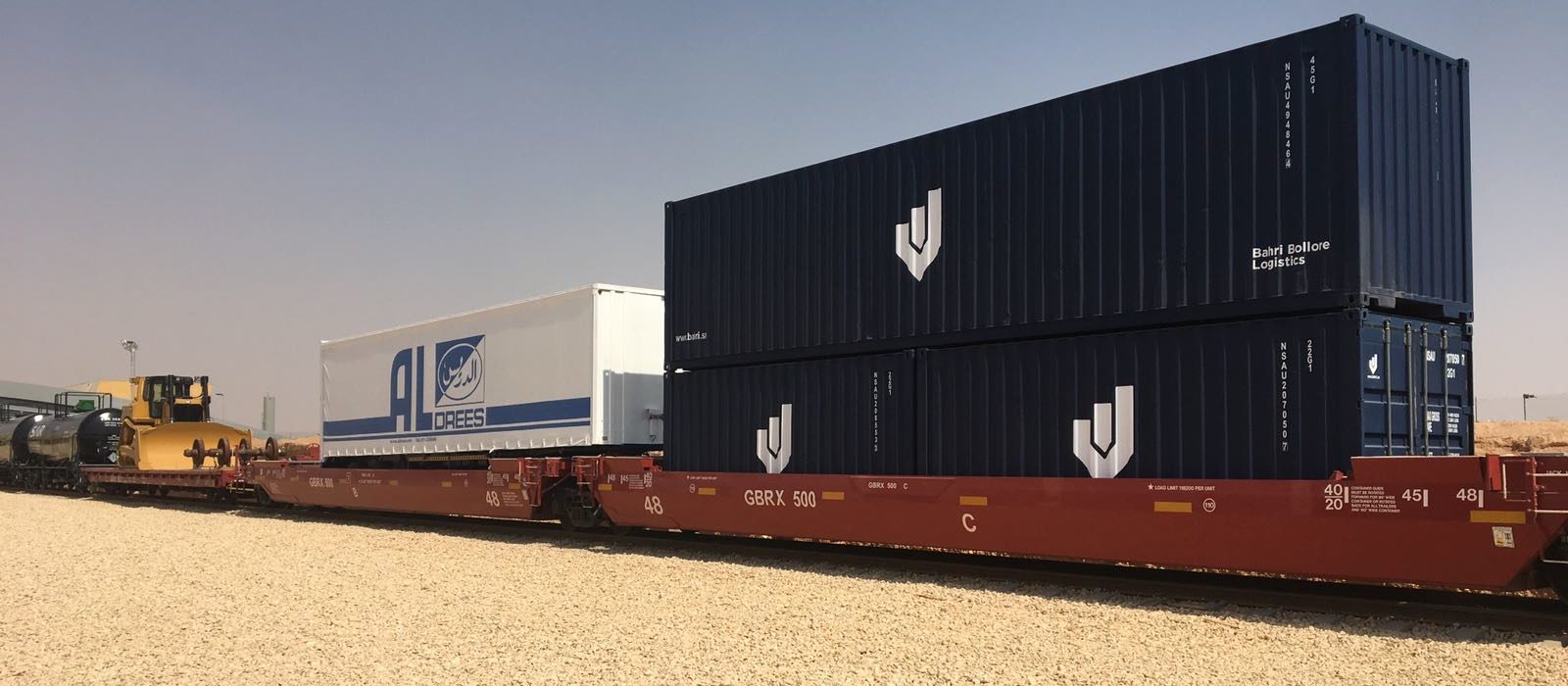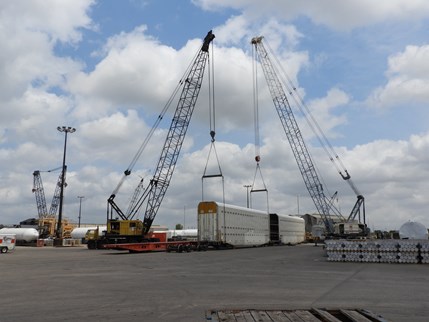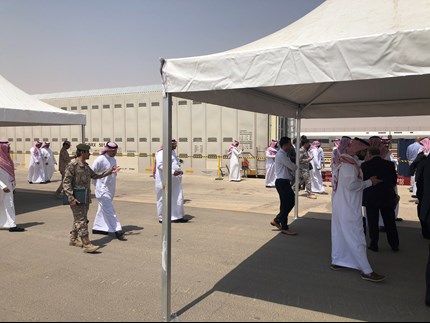
Saudi Railway Company (SAR) has made massive gains in the freight transportation industry by moving over 12.5 million tons of goods over the last year with the intention to increase capacity of their services to 20 million tons by 2025[i]. In fact, the shift to rail in the Kingdom has already removed 500,000 trucks from the roads[ii], saving fuel, decreasing emissions and reducing overuse of road infrastructure. The local English language daily, Arab News recently wrote, “Compared with other means of transport, trains have a lower carbon footprint, cost less, are more reliable and have lower manpower requirements.”[iii]
Many of these improvements stem from the groundbreaking Saudi Vision 2030, the national plan to diversify the economy and reduce the Kingdom’s dependence on oil. Key components of the plan focus on transforming Saudi Arabia into an investment powerhouse and global logistics hub connecting Asia, Europe and Africa. Saudi Arabia’s size (830,000 square miles – roughly 3 times the size of Texas) and geographic location allow for enormous freight rail potential which will create new trade routes and improve existing paths to these three continents[iv].
Greenbrier has been involved with the Saudi Arabian railcar market since 2015 when SAR put in an order for 1,200 tank cars to transport Molten Sulphur and Phosphoric Acid. On September 10, 2018, Greenbrier participated in the SAR Freight Solutions Forum. In preparation for this event, we identified three necessary car types: Auto-Max II, Maxi Stack AP and heavy-duty flatcar. We disassembled one of each car in the US, shipped them to the Kingdom, reassembled and inspected in Riyadh, and presented the cars as part of the Forum. Approximately 100 potential customers attended and SAR successfully announced the plans to diversify their customer base and services, including expanding from mineral and passenger transport to hauling other types of cargo. Coordinating our participation in the Freight Solutions Forum demonstrated the importance of expanding rail into new markets and solidifying global relationships.


In late October, Greenbrier and SAR announced an agreement to form a new joint venture (see press release) at the Future Investment Initiative held in Riyadh. This JV will assist Saudi Arabia in becoming a logistics hub with a planned investment of 1 billion Saudi riyals (USD $270 million) in assets and infrastructure required to expand the Saudi rail industry.
The nature of freight rail is changing across the globe, and the Kingdom of Saudi Arabia is poised to reap the benefits from investing in the industry. Rail infrastructure allows for greater economic competitiveness, higher import and export potential, and increased capacity for trade partnerships in the GCC and beyond; all while lowering the environmental impact of transporting goods. We, at Greenbrier, are honored to be a part of the development of railway systems within the GCC.
[i] Muhammad, Fatima. Saudi Arabian Railway to Increase Cargo Transport to 20 Million Tons by 2025. Saudi Gazette, 10 Sept. 2018, saudigazette.com.sa/article/543148/BUSINESS/Saudi-Arabian-Railway-to-increase-cargo-transport-to-20-million-tons-by-2025.
[ii] Muhammad, Fatima. Saudi Arabian Railway to Increase Cargo Transport to 20 Million Tons by 2025. Saudi Gazette, 10 Sept. 2018, saudigazette.com.sa/article/543148/BUSINESS/Saudi-Arabian-Railway-to-increase-cargo-transport-to-20-million-tons-by-2025.
[iii] Ghazanfar Ali Khan, Rashid Hassan. “Saudi Rail Chiefs Reveal Expansion Plans for Freight, Passengers.” Arab News- Saudi Arabia, Arab News, 10 Sept. 2018, www.arabnews.com/node/1370161/saudi-arabia.
[iv] “Our Vision: Saudi Arabia..the Heart of the Arab and Islamic Worlds, the Investment Powerhouse, and the Hub Connecting Three Continents.” Saudi Vision 2030, vision2030.gov.sa/en.

